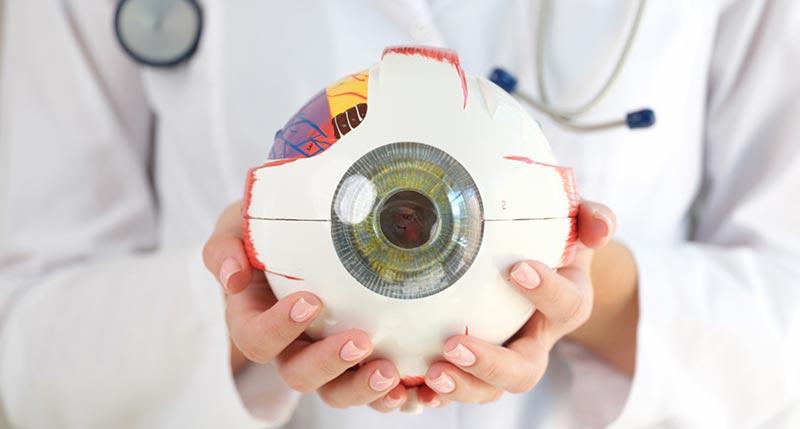All Categories
Featured
When it comes to sunlight security, lots of people concentrate on securing their skin from dangerous UV rays. The impacts of UV radiation on your eyes are similarly essential but usually ignored. Prolonged exposure to ultraviolet (UV) rays can bring about numerous eye conditions, some of which may result in irreversible damage or vision loss. Whether you're outdoors on a bright beach or taking a stroll on an overcast day, comprehending exactly how UV rays affect your eyes and learning just how to secure them is important for keeping healthy vision.
What Are UV Rays and Just How Do They Influence the Eyes? UV rays are a kind of undetectable radiation discharged by the sunlight. There are 3 types of UV rays:
UVA Rays: These permeate deeply into the skin and eyes, adding to long-term damage. UVB Rays: These are extra extreme and can trigger surface-level damage, such as sunburn or corneal damage. UVC Rays: These are the most dangerous but are absorbed by the Planet's atmosphere and hardly ever present a straight danger. Both UVA and UVB rays can damage different parts of the eye, consisting of the cornea, lens, and retina.
Short-Term Effects of UV Direct Exposure. Even a brief period of extreme UV exposure can harm your eyes. A common condition arising from this is photokeratitis, frequently defined as "sunburn of the eye." Signs include:
Excruciating or red eyes. Level of sensitivity to light. Too much tearing. Short-term blurry vision. Photokeratitis is normally momentary however serves as a suggestion of the immediate dangers of UV radiation.
Long-Term Results of UV Exposure. Cumulative UV exposure gradually can cause numerous serious eye problems, including:

Cataracts: UV rays accelerate the advancement of cataracts, a problem where the lens of the eye ends up being over cast, bring about vision disability. Cataracts are a leading reason for blindness worldwide.
Macular Degeneration: The macula, a component of the retina liable for central vision, can be damaged by prolonged UV direct exposure, enhancing the risk of age-related macular deterioration (AMD)
Pterygium: Typically called "web surfer's eye," this problem involves a development of cells on the white part of the eye, which can cross the cornea and hinder vision.
Pinguecula: UV direct exposure can create yellow-colored areas to develop on the conjunctiva, resulting in inflammation and pain.
Skin Cancer Cells Around the Eyes: The fragile skin surrounding the eyes is very at risk to UV radiation, boosting the threat of basal and squamous cell cancer.
Shielding Your Eyes from UV Damage. The good information is that securing your eyes from UV radiation is simple and effective. Right here are some important suggestions:
Wear UV-Blocking Sunglasses. Pick sunglasses that block 100% of UVA and UVB rays. Look for tags indicating "UV 400" security. Wrap-around designs supply extra protection, protecting against UV rays from entering from the sides.
Utilize a Wide-Brimmed Hat. A hat with a broad brim can block nearly 50% of UV rays, providing additional defense for your eyes and the fragile skin around them.
Avoid Top Sun Hours. UV rays are toughest between 10 a.m. and 4 p.m. Lessen your outside direct exposure throughout these hours, or guarantee you're appropriately protected if you require to be outdoors.
Protect Your Eyes Year-Round. UV rays are existing year-round, also on over cast or snowy days. Snow, sand, and water can show UV rays, escalating their effects. Make sunglasses a part of your daily regimen, no matter of the period.
Think About UV-Blocking Contact Lenses. Numerous contact lenses currently supply UV defense, which can be an additional guard when coupled with sunglasses.
Encourage Eye Defense for Children. Kid's eyes are a lot more vulnerable to UV damage because their lenses are clearer, permitting more UV light to reach the retina. Ensure they use sunglasses and hats when playing outdoors.
Arrange Regular Eye Tests. Regular visits to an eye treatment expert are necessary for monitoring your eye health. An eye doctor can discover early signs of UV-related damages and recommend options, such as prescription sunglasses or UV-blocking glasses tailored to your needs.
Conclusion. UV rays might be undetectable, yet their influence on your eye wellness is really real. From short-lived pain to long-lasting conditions like cataracts and macular degeneration, the risks of UV direct exposure are as well substantial to overlook. By putting on UV-blocking sunglasses, restricting your exposure throughout height hours, and scheduling normal eye tests, you can protect your vision and take pleasure in the outdoors securely. Keep in mind, your eyes are among your most important possessions-- take the required steps to protect them from damaging UV rays today.
Latest Posts
Explore Best Car Repair Solutions at Montclare Auto Repair – Reliable Repairs Await
Learn Why Chicago Drivers Select Montclare Auto Repair for Reliable Service and Significant Savings
Secure Your Home with Quality Residential Roof
More
Latest Posts
Explore Best Car Repair Solutions at Montclare Auto Repair – Reliable Repairs Await
Learn Why Chicago Drivers Select Montclare Auto Repair for Reliable Service and Significant Savings
Secure Your Home with Quality Residential Roof